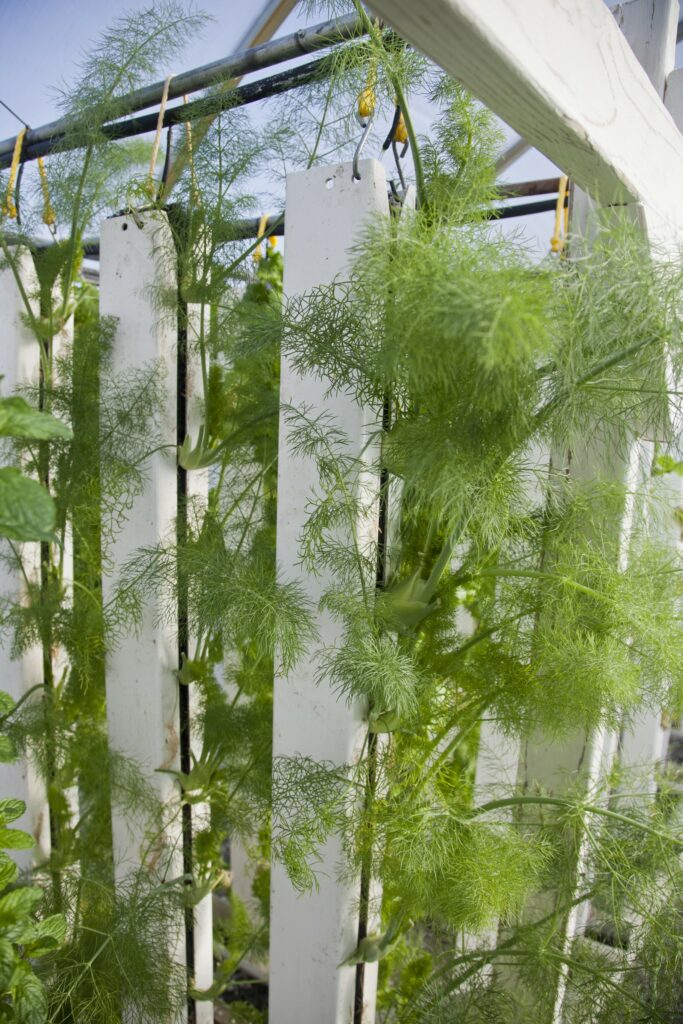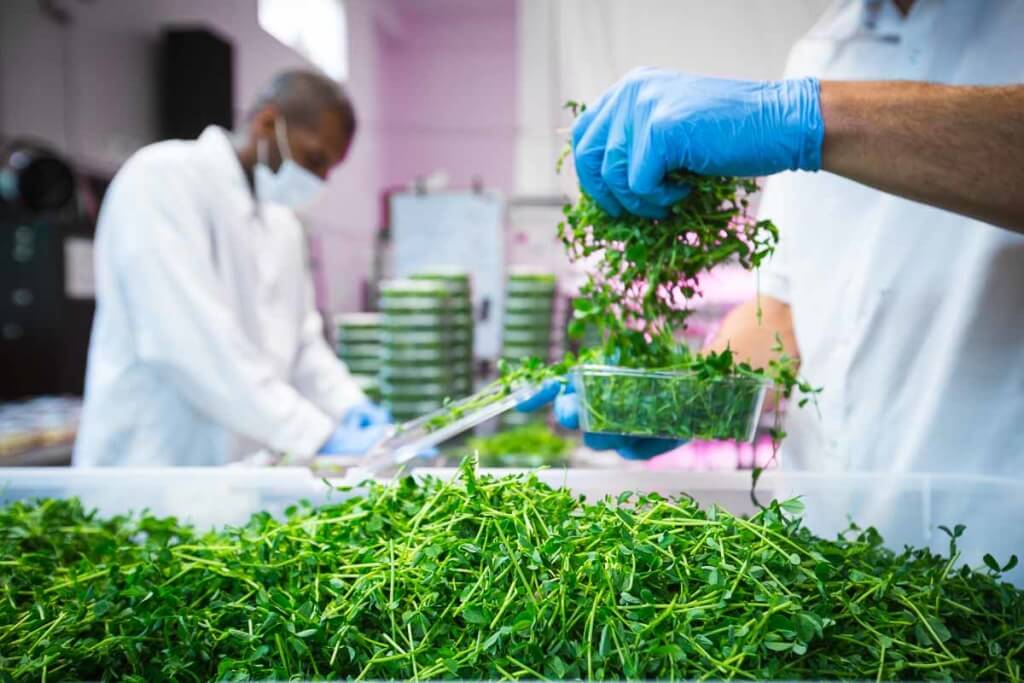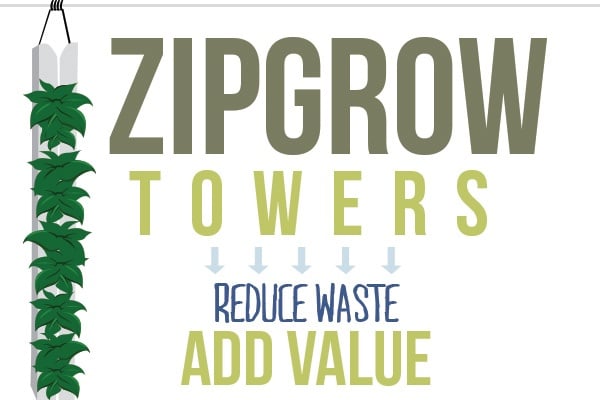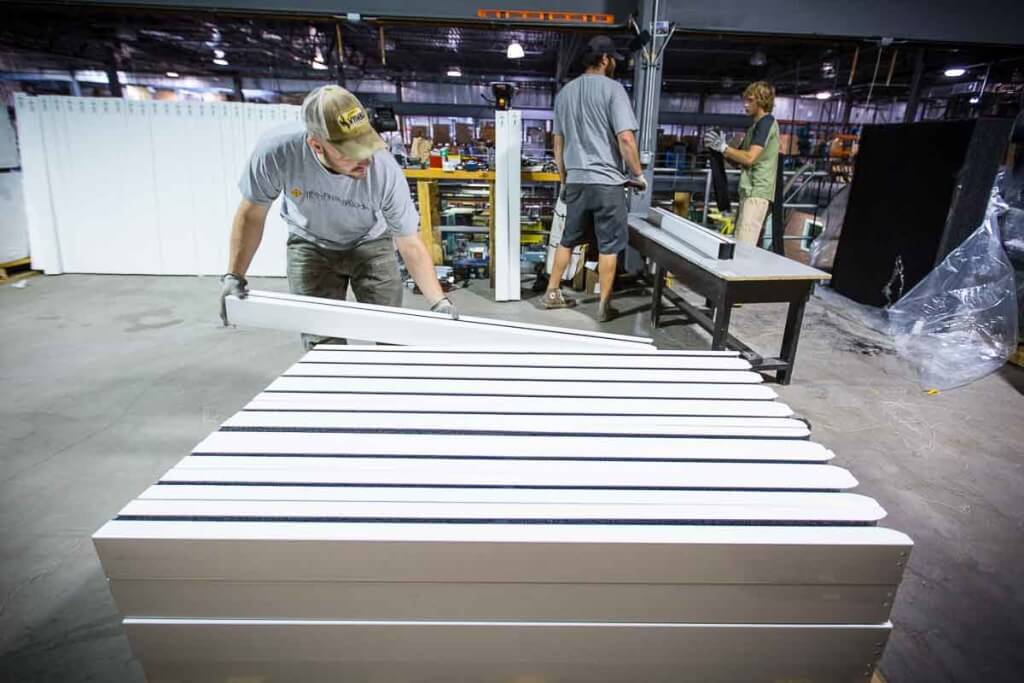More to successful growing than just productivity?
After a busy weekend drawing up wiring schematics for several new farms, I came home a little grumpy to a sick baby girl, and half a dozen notifications regarding a LinkedIn thread Id recently commented on.
In passing, Id mentioned that our equipment was seeing great results with strawberry production, and immediately one of the LinkedIn experts chimed in to challenge my claims.
The conversation developed, with a number of smart and experience folks centering the debate squarely on the idea of productivity.
The problem was that they were all debating the wrong thing.
Productivity is not the most important consideration for hydroponic or aquaponics farms.*
 Let me clarify.
Let me clarify.
ZipGrow Towers are significantly more productive than other aquaponic and hydroponic techniques – they have incredible BSA that allows for quick nutrient cycling and stable rootzones. But this is NOT why people should use Towers.
People should use Towers not because they are more productive, but because they approach production and distribution from an entirely different angle.
Here’s how:
The tale of Farmer Joe
Farmer Joe runs a hydroponic greenhouse.
His operating costs might look something like this: (Note: This is just a made up budget.)
Energy: 15% of total costs
Supplies: 7% of total costs
Water: 5% of total costs
Labor: 60% of total costs
Packaging and Marketing: 8% of total costs
Insurance: 2% of total costs
Miscellaneous: 3% of total costs
Now this budget could be fairly different depending on his business model, crop, location, etc., but there are some numbers that I guarantee will be almost the same no matter what: Labor and Packaging/Marketing.

This is almost 70% of the total operating cost. The post harvest portion of this is typically around 60%. Sixty percent!
What’s the big deal?
So what’s the big deal?
Were thinking about this budget, and how we make money ALL WRONG.
Production obsession… where does it get you?
Traditionalists are obsessed with production. Essentially, they’ve been taught their entire careers that the way to compete with the greenhouse next door was more production, more efficient production, economies of scale savings, etc. etc. It’s why we have so many huge greenhouse production corporations in the world.
They’re fighting tooth and nail for the smallest piece of the pie. As you get bigger, yes, you save a small percentage on many of these costs, but you’re building your economic advantage by maximizing output as a function of your smallest operational costs:
- Energy
- Insurance
- Miscellaneous
- Some Supplies
 For every head of lettuce you produce, your other costs stay almost the same. Sure, you can carve 2 or 3 or maybe even 5 or 6% off of that big old 60% investment in manpower and clamshell packaging, but 6% of 60% is only 3.6% of your total cost. A small advantage at best. The industry has become so myopic that they believe that this is the lowest hanging fruit they have to fight for.
For every head of lettuce you produce, your other costs stay almost the same. Sure, you can carve 2 or 3 or maybe even 5 or 6% off of that big old 60% investment in manpower and clamshell packaging, but 6% of 60% is only 3.6% of your total cost. A small advantage at best. The industry has become so myopic that they believe that this is the lowest hanging fruit they have to fight for.
They’re wrong.
Waste, waste, and more waste
60% of your cost is a huge number. If you are a grocery store buying a head of lettuce wholesale for $1.00, you are essentially paying 60 cents for labor, plastic, stickers and cardboard. Talk about a waste of money.
When I saw this a decade ago, all I saw was waste. Waste in landfills, waste in unused product, spoilage, and waste in handling (the source of much foodborne illness). This means that at the end of the day, the consumer pays more for what equates to landfill space and higher disease risk. I don’t know about you, but I want more value for my money.
Our approach: reduce waste, add value
So we did something about it. You see, while the industry was out there squabbling over crumbs worth 5%, 6%, 7%, obsessively fixated on Production! Production! Production!, we hacked most of that 60% right out of our budget. That’s right. Instead of spending $100K a year on operational costs, Farmer Joe now only spends $45K-$55K per year.
While the industry was chasing its tail, we chopped most of that 60% right out of our operating budget.
And let me tell you: That’s a big deal.

So how did we do it?
I believe that whenever a business can deliver more value to everyone that it works with, that business will almost always succeed. That’s the ideal, right? I build something beautiful and it helps me, it helps you, it helps everyone. Virtuous cycle. Positive feedback loop.
In this case, by chopping the packaging, the labor, and the transportation out of the budget, I make more money, the grocery store makes more money (and has less waste), and customers get a better, healthier, tastier product.
We do this by using ZipGrow towers to transport produce to market still alive. Consumers at the market essentially perform all of this post-harvest labor and packaging for us.
Traditional producers have costs that scale with them, almost perfectly. It’s a brutal, almost linear relationship subject to diminishing returns. Our model simply doesn’t have those costs.
This is why it’s impossible to talk with traditionalists about what we do.
They want to split hairs on the topic of production efficiency, while frankly, we couldn’t care less.
Don’t misinterpret me, our towers are more efficient- that’s not the point. It never was, and as far as I’m concerned, it never should be.
Sure, we can cram a lot of production into a very small space… but all of the production in the world doesn’t matter if your costs scale with it.
Upstart Farmers are feeling the change
We’re seeing a lot of interest in hydroponic farming. Farmers are growing, making money, and expanding at a rate that is tough to keep up with.
For the last three years, we’ve sent out 10 times as many Towers as we did the year before. People are making money, enriching their community and getting excited about food, all because the model works. All because the model frees them from the tooth and nail constraints of traditional hydroponic production. That’s something I can make time for.

The debaters continue debating while the innovators grow on
I’m pretty sure that LinkedIn thread is still trudging onward, with the participants challenging and arguing and talking about Production.
I’m sure they’ll still be debating and arguing long after the supermarkets are full of excited customers buying live produce, after my sick little daughter gets better, after our farmers take market after market from the big, production focused firms.
It’s like the dinosaurs sitting around arguing about who is the fittest, while the small, industrious mammals are quietly doing their thing, watching the storm clouds roll in, and feeling the change.
Note:
*I know I’m going to catch a lot of flak for this assertion, but I stand by it. You will not make money by growing 3% more than the grower next door. You’ll make money by throwing off the yoke of traditional distribution. Plus, who wants to work themselves to death for a 3% raise? Not me.





